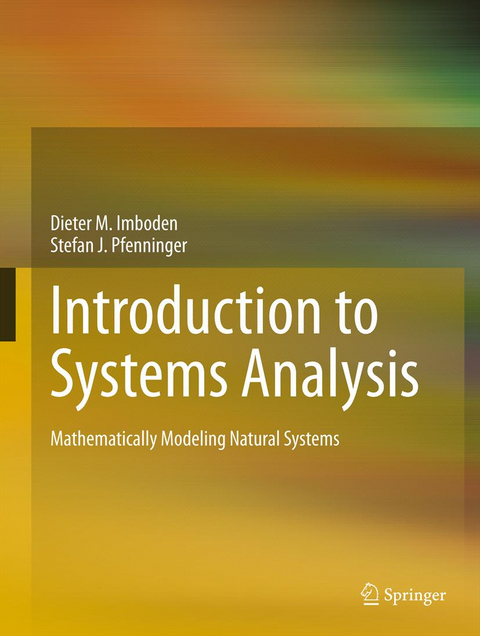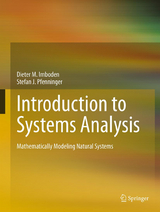Introduction to Systems Analysis
Springer Berlin (Verlag)
978-3-642-30638-9 (ISBN)
Systems and their mathematical description play an important role in all branches of science. This book offers an introduction to mathematical modeling techniques. It is intended for undergrad students in applied natural science, in particular earth and environmental science, environmental engineering, as well as ecology, environmental chemistry, chemical engineering, agronomy, and forestry.
The focus is on developing the basic methods of modeling. Students will learn how to build mathematical models of their own, but also how to analyze the properties of existing models. The book neither derives mathematical formulae, nor does it describe modeling software, instead focusing on the fundamental concepts behind mathematical models. A formulary in the appendix summarizes the necessary mathematical knowledge. To support independent learners, numerous examples and problems from various scientific disciplines are provided throughout the book. Thanks in no small part to the cartoons by Nikolas Stürchler, this introduction to the colorful world of modeling is both entertaining and rich in content
Dieter Imboden is Professor of Environmental Physics. His research concerns the study of physical processes in aquatic systems as well as problems of energy and climate politics. He is President of the Research Council of the Swiss National Science Foundation (SNSF) Stefan Pfenninger joined IIASA's Risk, Policy and Vulnerability Program (RPV) in January 2010. He is contributing to RPV's research on resilience, adaptation and renewable energy. Stefan holds a BSc in Environmental Science from ETH Zurich and an MSc in Environmental Technology from Imperial College London.
1. Introduction.- 2. Mathematical models.- 3. Static models.- 4. Linear one dimensional models.- 5. Linear multi dimensional Models.- 6. Non-linear models.- 7. Time discrete models.- 8. Models in time and space.- A. List of symbols.- B. Dimensions and units.- C. Formulary.- D. Eigenvalues.- E. Time-dependent diffusion equation.- Bibliography.- Index.
From the book reviews:
"This book is a translation of the German text ... by D. M. Imboden and S. Koch. It was developed on the basis of lecture notes for the course in Systems Analysis taught at the Swiss Federal Institute of Technology (ETH) Zürich for over twelve years and has been tested in the classroom many times. ... Warmly recommended as a concise but comprehensive introduction to mathematical modeling." (Svitlana P. Rogovchenko, zbMATH, Vol. 1302, 2015)
"Imboden and Pfenninger have written a marvelous book that explores detailed systems analysis for a large variety of systems. The book gives a gentle introduction to one-parameter systems with a simple lake model. ... this book is an excellent overview of systems analysis with varied examples and detailed explanations. It is worth having in your library." (David S. Mazel, MAA Reviews, February, 2014)
| Erscheint lt. Verlag | 14.12.2012 |
|---|---|
| Zusatzinfo | VIII, 252 p. |
| Verlagsort | Berlin |
| Sprache | englisch |
| Maße | 210 x 279 mm |
| Gewicht | 810 g |
| Themenwelt | Naturwissenschaften ► Geowissenschaften ► Geologie |
| Schlagworte | Applied mathematics • Environmental Science • Mathematisches Modell • Modeling |
| ISBN-10 | 3-642-30638-1 / 3642306381 |
| ISBN-13 | 978-3-642-30638-9 / 9783642306389 |
| Zustand | Neuware |
| Haben Sie eine Frage zum Produkt? |
aus dem Bereich




